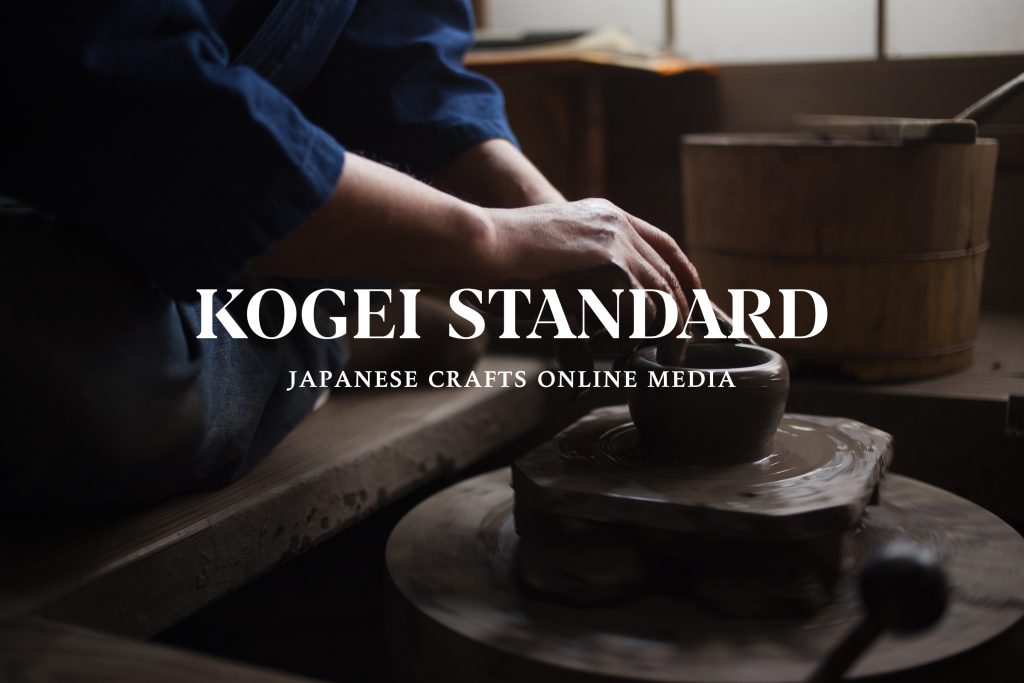Japanese sake has grown in popularity in recent years. With the expansion of Japanese food culture around the world, more and more non-Japanese people are well acquainted with terms such as sake and Guinomi or sake cup. Sake ware, along with tea ware, is one of the best examples for representing the Yo no Bi – the “beauty of everyday things”, which was created by Soetsu Yanagi, the founder of the Mingei (folk crafts) movement in Japan – and I would like to help more people use them in their everyday lives.
Sake ware could be roughly divided into three types: Sakazuki, Ochoko and Guinomi. Sakazuki are shallow dishes, shaped like plates dented in the center, Ochoko are smaller cups used for drinking sake. Guinomi are generally larger than Ochoko, and their name was taken from the phrase “Gui to nomu – drink it at a gulp”. As for the utensils for pouring sake, there are two types: “Tokkuri – sake bottle” and “Katakuchi – lipped bowl.” While in Japan sake can be served warm or chilled, as it is rarely served warm overseas the Katakuchi for chilled sake are more popular there.
There is an expression for sake ware: “Bizen for Tokkuri and Karatsu for Guinomi ”. Bizen-ware is characterized by powerful expressions resulting from high temperature firing without glazes, whereas Karatsu-ware includes various styles such as Brush-painted Karatsu, Korean Karatsu and Kawakujira (whale’s skin) Karatsu. Bizen and Karatsu both have deep and distinctive features which have attracted people for many years. In addition to glazed and unglazed ceramics, a variety of other types of sake ware have been created using porcelain, glass, lacquerware, and tin. Sake wares are compatible with certain types of sake, and it is fun to think about matching the type of sake ware with the kind of sake you are drinking. The taste of sake can be changed significantly by selecting an appropriate type of sake for whether it is hot or cold, or sweet or dry. For instance, for those who would like to simply enjoy the taste of a premium sake such as Junmai-shu or Daiginjo, I would recommend a simple sake cup such as a thin white porcelain Ochoko cup or a glass cup without any decoration. A simple cup without decorative design helps you concentrate on the taste of sake. On the other hand, for those who would like to enjoy the texture of a sake cup along with the taste of the sake itself, you may want to choose a ceramic guinomi sake cup or Kiriko glass cup. Guinomi cups of Karatsu, Shino and Oribe styles in particular have the exquisite texture of their melted glazing to give you pleasure in both drinking and viewing the cup. For those who appreciate the texture and feeling of the cup on the tongue, try Wajima lacquerware or a wooden sake cup.
It is also good to enjoy matching sake with cuisine. Sake goes well with French and Italian dishes, but I still prefer to have sake with Japanese food that uses fresh seasonal ingredients. It does not necessarily have to be a feast, and there are so many kinds of snacks or side dishes in Japan that go well with sake. Finding a good match for seasonal sake that goes well with seasonal dishes and enjoying them together is quite a luxury. There are virtually infinite combinations among types of sake, sake cups, and dishes to enjoy. We have customers who love and collect sake ware and guinomi cups at our gallery that visit us regularly. It is good to continue loving one sake cup now and forever, but it is also good to collect various types of sake ware and use them to suit your preference. Through Japanese crafts, we hope you will be able to step into the deep world of sake ware.
Yusuke Shibata


